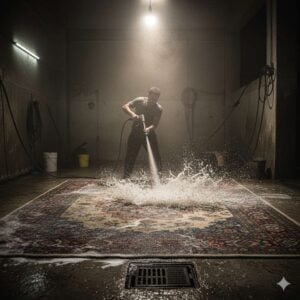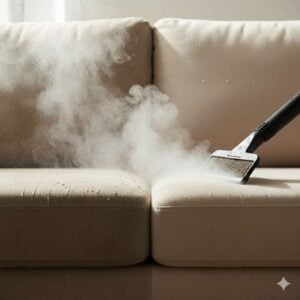Hey there! If you’re on the lookout for the best home cleaning Sharjah tips, you’ve come to the right place. Keeping your home spotless can be a challenge, especially with our busy schedules. That’s why we’ve put together this comprehensive guide to help you achieve a pristine home with ease. Home cleaning Sharjah is essential not only for maintaining a pleasant living environment but also for ensuring the health and well-being of your family. Clean spaces reduce allergens, prevent pest infestations, and promote overall wellness. Let’s dive into these easy tips and transform your home into a sparkling sanctuary!
Table of Contents
Toggle#1: Declutter First for Efficient Cleaning
Decluttering is a crucial first step before any cleaning session. A clutter-free space not only looks better but also makes the cleaning process more efficient and less overwhelming. Begin by tackling one room at a time to avoid feeling overwhelmed. Start with visible surfaces such as countertops, tables, and floors. Use a systematic approach: sort items into three categories—keep, donate, and discard. Items you use regularly should be kept in an accessible spot, while those used less frequently can be stored away.
For the donation pile, consider local charities or donation centers in Sharjah that accept gently used items. This not only helps others but also gives your items a second life. Discard broken or unusable items responsibly, following Sharjah’s waste management guidelines.
Next, address storage areas like closets, drawers, and cabinets. Organize these spaces by grouping similar items together, using storage bins or boxes to keep everything neat. Labeling these containers can save time when searching for specific items later. For instance, kitchen cabinets can have separate bins for baking supplies, snacks, and spices.
In the living room, clear out old magazines, newspapers, and any other unnecessary items. Use decorative baskets or storage ottomans to keep remote controls, blankets, and other essentials organized but out of sight. The bedroom should be a sanctuary; therefore, remove any non-essential items from nightstands and dressers. Use under-bed storage for seasonal clothing or extra bedding.
Don’t forget to declutter digital spaces as well. Organize your digital files, delete unnecessary emails, and back up important documents. This can make finding important information quicker and reduce digital clutter.
By decluttering first, you create a more manageable environment for thorough cleaning. It sets the stage for a more organized and tidy home, making the actual cleaning process less daunting and more efficient.
Image Caption: “Decluttered living room ready for cleaning.”
#2: Create a Cleaning Schedule
Creating a cleaning schedule is essential for maintaining a consistently clean and organized home. A well-planned schedule helps distribute tasks evenly, making them less overwhelming and ensuring that no area is neglected. Start by listing all the cleaning tasks that need to be done in your home. Divide these tasks into daily, weekly, and monthly categories.
For daily tasks, focus on activities that keep your home tidy on a day-to-day basis. This includes making beds, washing dishes, wiping down kitchen counters, and tidying up common areas. Incorporating these small tasks into your daily routine can prevent messes from piling up and make weekly cleaning easier.
Weekly tasks should cover more intensive cleaning areas. Assign specific days for different rooms or tasks to ensure everything gets attention. For example, Mondays could be for cleaning bathrooms, Wednesdays for vacuuming and mopping floors, and Fridays for dusting furniture and cleaning mirrors. This approach ensures that each area of your home gets a thorough cleaning at least once a week without feeling overwhelmed.
Monthly tasks involve deep cleaning and maintenance chores that don’t need to be done as frequently but are crucial for a clean and healthy home. This includes tasks like cleaning windows, washing curtains, deep cleaning carpets, and descaling kitchen appliances. Scheduling these tasks at the beginning of each month can help you stay on top of them and ensure they get done regularly.
To make your cleaning schedule more effective, consider using a planner or digital calendar to set reminders for each task. You can also create a visual chart and display it in a common area, such as the kitchen, to keep the whole family informed and involved in maintaining a clean home. By following a consistent cleaning schedule, you can achieve a more organized and tidy living space with less effort and stress.
Image Caption: “Sample cleaning schedule for a busy household.”
#3: Use the Right Cleaning Products
Using the right cleaning products is crucial for achieving effective and safe results. Different surfaces and materials require specific products to ensure they are cleaned thoroughly without causing damage. Start by identifying the various surfaces in your home, such as wood, glass, tile, stainless steel, and fabric. Once you know what you’re working with, choose products that are designed for those specific materials.
For wood surfaces, opt for gentle, wood-specific cleaners that nourish and protect the wood while removing dirt and grime. Avoid using water or harsh chemicals that can strip the wood’s finish and cause damage over time. For glass surfaces, such as windows and mirrors, use a streak-free glass cleaner that leaves no residue. Microfiber cloths are particularly effective for these surfaces, as they can clean without leaving streaks or lint.
In the kitchen, ensure you use products that are safe for food preparation areas. Non-toxic, eco-friendly cleaners are ideal for countertops, stovetops, and sinks. These products are effective in removing grease and food residues without leaving harmful chemicals behind. For stainless steel appliances, use a specialized stainless steel cleaner to maintain their shine and prevent streaks and fingerprints.
Bathrooms require products that can tackle soap scum, mildew, and hard water stains. Look for bathroom-specific cleaners that disinfect and deodorize while effectively removing buildup. For toilet cleaning, use a powerful disinfectant that can eliminate germs and odors. When cleaning tile and grout, a grout cleaner and brush can help remove embedded dirt and restore the grout’s original color.
Additionally, consider using eco-friendly cleaning products that are biodegradable and non-toxic. These products are not only safer for the environment but also for your family’s health. They reduce the risk of allergic reactions and respiratory issues associated with harsh chemical cleaners.
By using the right cleaning products for each surface in your home, you can achieve a more thorough and effective clean while preserving the integrity and appearance of your household items.
Image Caption: “Eco-friendly cleaning products for a healthier home.”
#4: Focus on High-Traffic Areas
Focusing on high-traffic areas is essential for maintaining a clean and healthy home. These areas, which include the kitchen, bathroom, and living room, see the most activity and can quickly accumulate dirt, grime, and bacteria. Prioritizing these spaces in your cleaning routine ensures that your home stays cleaner for longer and reduces the spread of germs.
Start with the kitchen, as it is often the heart of the home and a hub of activity. Clean countertops daily to remove food particles and spills, which can attract pests and harbor bacteria. Pay special attention to the sink and faucet, as they are frequently used and can accumulate grime and germs. Disinfect these areas regularly to maintain a hygienic environment. Don’t forget to clean appliances like the stovetop, oven, and microwave, as food splatters and spills can build up quickly. Wipe down the exterior of the refrigerator and other appliances to keep them looking clean and fresh.
In the bathroom, focus on areas that are prone to moisture and bacteria buildup. Clean the sink, toilet, and shower or bathtub regularly to prevent soap scum, mildew, and hard water stains. Use a disinfectant on surfaces like countertops, faucets, and door handles to reduce the spread of germs. Pay attention to the floor, especially around the toilet, as it can harbor bacteria and odors. Regularly wash bath mats and towels to keep the bathroom fresh and clean.
The living room, being a central gathering space, also requires regular attention. Dust and vacuum the floors and furniture to remove dirt, pet hair, and allergens. Pay special attention to upholstery, as it can trap dust and allergens. Clean and disinfect frequently touched surfaces like remote controls, light switches, and door handles. If you have children or pets, be extra diligent in keeping the living room clean, as it can quickly become messy.
By focusing on these high-traffic areas, you can maintain a cleaner and healthier home environment. This targeted approach ensures that the spaces where you and your family spend the most time remain hygienic and inviting.
Image Caption: “Cleaning high-traffic areas like the kitchen and bathroom.”
#5: Deep Clean Carpets and Upholstery
Deep cleaning carpets and upholstery is essential for maintaining a clean and healthy home environment. These surfaces can harbor dirt, allergens, and bacteria that regular vacuuming might not fully eliminate. Deep cleaning helps to remove embedded dirt and grime, improving the appearance and longevity of your carpets and upholstery.
Start by vacuuming the carpets and upholstery to remove loose dirt and debris. Use a vacuum cleaner with a HEPA filter to capture smaller particles and allergens effectively. For high-traffic areas and spots that are heavily soiled, consider using a carpet cleaner or steam cleaner. These machines use hot water and cleaning solutions to penetrate deep into the carpet fibers, loosening dirt and stains.
When deep cleaning carpets, focus on one section at a time. Pre-treat any stains with a suitable stain remover, following the manufacturer’s instructions. Allow the stain remover to sit for a few minutes before using the carpet cleaner. Move the cleaner slowly over the carpet, allowing the machine to extract as much dirt and moisture as possible. After cleaning, ensure the carpet is thoroughly dried to prevent mold and mildew growth. You can use fans or open windows to speed up the drying process.
For upholstery, check the care labels to determine the appropriate cleaning method. Some fabrics may require dry cleaning or specific cleaning solutions. Use an upholstery cleaner or steam cleaner to deep clean the fabric, paying special attention to areas that come into frequent contact with skin, such as armrests and seat cushions. Be gentle to avoid damaging delicate fabrics, and always test the cleaner on a small, inconspicuous area first.
To maintain the cleanliness of your carpets and upholstery, consider deep cleaning them at least twice a year. If you have pets or allergies, more frequent cleaning might be necessary. Regular deep cleaning not only improves the appearance of your home but also contributes to a healthier living environment by reducing allergens and bacteria.
Image Caption: “Deep cleaning carpets for a fresh and clean home.
#6: Don’t Forget About Windows and Mirrors
Clean windows and mirrors can make a significant difference in the overall appearance and brightness of your home. They allow more natural light to enter, making spaces look larger and more inviting. To achieve streak-free windows and mirrors, follow these steps:
Start by dusting the window frames, sills, and corners to remove any loose dirt and cobwebs. Use a microfiber cloth or a duster to avoid scratching the glass. For heavily soiled windows, especially those exposed to the outdoors, begin by rinsing the glass with water to remove surface dirt.
Next, choose an effective glass cleaner. You can either use a commercial glass cleaner or make a homemade solution using equal parts water and white vinegar. Spray the cleaner onto the glass and let it sit for a few seconds to break down any grime and grease.
When wiping the windows, use a clean, lint-free microfiber cloth or paper towels. Start at the top and work your way down in a zigzag pattern to prevent streaks. For larger windows, use a squeegee for a more efficient clean. Make sure to wipe the squeegee blade with a cloth after each pass to avoid transferring dirt back onto the glass.
For mirrors, the process is similar. Spray the cleaning solution onto the surface and use a microfiber cloth to wipe it clean. Pay attention to the edges and corners where dirt can accumulate. If there are any stubborn spots or streaks, buff them out with a dry part of the cloth.
To maintain clean windows and mirrors, clean them at least once a month. If you live in an area with high pollution or near the sea, you might need to clean them more frequently to prevent buildup. Clean windows and mirrors not only improve the aesthetics of your home but also enhance the overall ambiance by allowing more light to flow through.
Image Caption: “Streak-free windows and mirrors for a brighter home.”
#7: Pay Attention to Dusting
Dusting is a crucial part of maintaining a clean and healthy home. Dust can accumulate quickly on surfaces, leading to allergies and respiratory issues. Regular dusting not only improves air quality but also keeps your home looking tidy and well-maintained.
Begin by dusting high surfaces first, such as ceiling fans, light fixtures, and the tops of cabinets. This ensures that any dust that falls will be cleaned up when you dust lower surfaces. Use a microfiber duster or cloth for these areas, as they are effective at trapping dust and preventing it from scattering into the air. For ceiling fans, a duster with an extendable handle can make the job easier and safer.
Move on to mid-level surfaces like shelves, picture frames, and electronics. When dusting electronics, use a soft, dry cloth to avoid scratching the surfaces. For intricate items like picture frames or decorative objects, a small, soft-bristled brush can help reach tight spaces.
Next, focus on furniture such as tables, desks, and chairs. Use a microfiber cloth slightly dampened with water or a dusting spray to pick up dust effectively. Pay special attention to areas that are often overlooked, such as the backs and legs of furniture. Dust these areas thoroughly to maintain a clean appearance.
Finally, dust baseboards and lower surfaces. Use a microfiber cloth or a duster specifically designed for baseboards to remove dust and dirt that collects near the floor. For areas that are difficult to reach, such as behind furniture, use a vacuum cleaner with a dusting attachment.
To minimize dust accumulation, consider using air purifiers and regularly replacing HVAC filters. Additionally, encourage family members to remove shoes at the door to reduce the amount of dust and dirt brought into the home.
By paying attention to dusting and following a systematic approach, you can maintain a cleaner, healthier home environment.
Image Caption: “Dusting furniture and shelves to maintain a dust-free home.”
#8: Tackle Kitchen Grease and Grime
The kitchen is one of the busiest areas in any home, making it a hotspot for grease and grime. Tackling these stubborn residues is essential for maintaining a clean and hygienic cooking environment.
Start by addressing the stovetop, where grease buildup is most common. Remove all burners and grates and soak them in a mixture of hot water and dish soap to loosen any stuck-on food particles. While they soak, use a degreaser or a mixture of baking soda and water to scrub the stovetop. Pay special attention to the knobs and control panel, which can harbor grease and bacteria.
Next, move on to the oven. For deep cleaning, use a commercial oven cleaner or a homemade paste of baking soda and water. Apply the cleaner generously to the interior surfaces, avoiding the heating elements. Let it sit for at least 30 minutes to break down the grease and grime. Wipe away the cleaner with a damp cloth, and for stubborn spots, use a plastic scraper to remove the residue.
Countertops and backsplashes also require regular cleaning to prevent grease buildup. Use a kitchen-safe degreaser or a mixture of vinegar and water to wipe down these surfaces. For tiled backsplashes, use a grout brush to clean between the tiles, where grease can accumulate.
Don’t forget about small appliances like the microwave, toaster, and coffee maker. For the microwave, place a bowl of water with a few slices of lemon inside and run it on high for several minutes. The steam will loosen any food particles, making it easier to wipe clean. Toasters and coffee makers should be cleaned according to the manufacturer’s instructions, focusing on removing crumbs and built-up residue.
Finally, tackle the kitchen sink, which can harbor bacteria and food particles. Use a scrub brush and a mixture of baking soda and water to clean the sink basin, faucet, and drain. Follow up with a disinfectant spray to kill any lingering germs.
By systematically tackling kitchen grease and grime, you can maintain a clean and safe environment for food preparation, ensuring your kitchen remains a welcoming and hygienic space.
Image Caption: “Removing kitchen grease for a sparkling cooking space.”
#9: Bathroom Cleaning Essentials
The bathroom is a high-moisture area prone to mildew, soap scum, and bacteria buildup. Keeping it clean requires specific attention to different surfaces and fixtures.
Begin with the shower or bathtub, which often accumulate soap scum and mildew. Use a commercial bathroom cleaner or a mixture of vinegar and baking soda to tackle these stains. Apply the cleaner and let it sit for a few minutes before scrubbing with a stiff brush or sponge. Pay extra attention to the grout lines, as they can harbor mold. For tough grout stains, a grout brush or an old toothbrush can be particularly effective.
Next, clean the toilet, focusing on both the bowl and the exterior. Use a toilet-specific cleaner with disinfecting properties. Pour the cleaner around the bowl, let it sit for a few minutes, and then scrub with a toilet brush. Don’t forget to clean under the rim and around the base of the toilet where dirt and bacteria can accumulate. Wipe down the seat and exterior surfaces with a disinfectant wipe or spray.
For the sink and countertop, use a bathroom cleaner or an all-purpose cleaner to remove toothpaste splatters, soap residue, and water spots. Scrub the sink basin, faucet, and handles thoroughly. If you have hard water stains, a mixture of vinegar and water can help dissolve the mineral buildup. Make sure to dry these areas with a clean cloth to prevent water spots and streaks.
Mirrors and glass surfaces in the bathroom should be cleaned with a glass cleaner or a mixture of water and vinegar. Use a microfiber cloth to wipe them down, ensuring a streak-free finish. Pay attention to any light fixtures or bathroom accessories that may also need dusting and cleaning.
Lastly, tackle the floor. Sweep or vacuum to remove hair and debris before mopping with a disinfectant cleaner. Pay special attention to corners and edges where dirt can gather. Regularly wash bath mats and shower curtains to keep them fresh and mold-free.
By following these bathroom cleaning essentials, you can maintain a hygienic and inviting space that promotes health and comfort.
Image Caption: “Cleaning bathroom tiles and fixtures for a spotless bathroom.”
#10: Freshen Up with Odor Removal
Keeping your home smelling fresh is just as important as maintaining its cleanliness. Unpleasant odors can make a clean house feel unwelcoming. Here’s how to effectively remove odors and ensure your home always smells inviting.
Start with the kitchen, a common source of household odors. Regularly take out the trash and clean the trash can to prevent lingering smells. Use baking soda at the bottom of the trash can to neutralize odors. Additionally, clean your refrigerator and freezer regularly to avoid food spoilage smells. For a quick freshening up, place a box of baking soda or activated charcoal in the fridge to absorb unwanted odors.
Move on to the bathroom, where moisture can cause unpleasant smells. Ensure proper ventilation by using exhaust fans or opening windows. Clean the bathroom regularly, paying special attention to the toilet, sink, and shower areas. Use air fresheners or essential oil diffusers to keep the bathroom smelling fresh. For a natural solution, place bowls of white vinegar or baking soda in the bathroom to absorb odors.
In the living room and bedrooms, focus on soft furnishings like carpets, rugs, and upholstery, which can trap odors. Sprinkle baking soda on carpets and upholstery, let it sit for at least 15 minutes, then vacuum thoroughly. Wash throw pillows, blankets, and curtains regularly to keep them fresh. Use fabric sprays with odor-neutralizing properties to maintain a pleasant scent.
Pet odors can be particularly challenging. Clean pet bedding and toys frequently. Bathe and groom your pets regularly to reduce the spread of odors. Use pet-specific deodorizers on areas where your pets spend the most time.
For a whole-house approach, consider using air purifiers with activated carbon filters to remove airborne odors. Regularly change HVAC filters to ensure efficient air circulation and odor removal.
By implementing these odor removal techniques, you can maintain a home that not only looks clean but also smells fresh and inviting.
Image Caption: “Using natural odor removers for a fresh-smelling home.”
Why Choose Bio On for Your Cleaner for Home
Bio On offers professional cleaning services tailored to meet your specific needs, ensuring a pristine and healthy living environment. With expertise in deep cleaning and odor removal, Bio On tackles even the toughest cleaning challenges effectively. The team uses eco-friendly, non-toxic products that are safe for both your family and the environment. Advanced cleaning techniques and equipment guarantee thorough sanitation, reducing allergens and bacteria in your home. Whether it’s routine maintenance or a one-time deep clean, Bio On provides reliable, high-quality service. For personalized cleaning solutions and expert advice, click the “Consult 24/7 for Free” button at the bottom right to schedule a consultation with the Bio On team.
Conclusion
Maintaining a clean and fresh home in Sharjah is achievable with the right strategies. By focusing on essential areas, using appropriate products, and scheduling regular deep cleans, your home can stay pristine and inviting. For those needing extra help, professional services ensure thorough and effective cleaning. To learn more and get personalized advice, contact the Bio On team through the WhatsApp button for a free consultation. Enjoy a cleaner, healthier living space with expert assistance.













